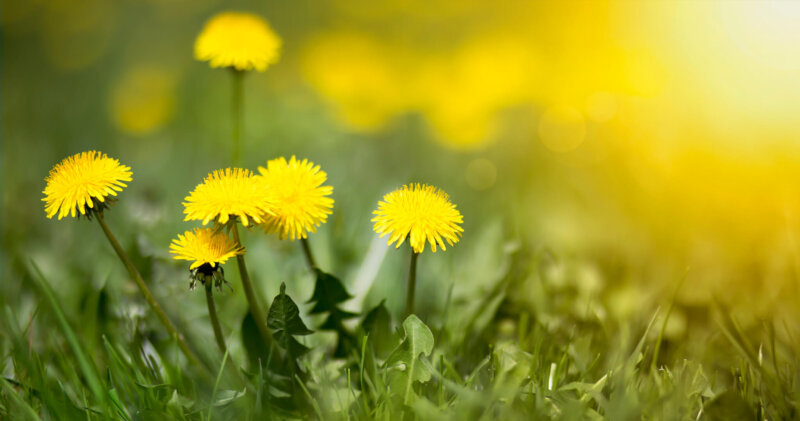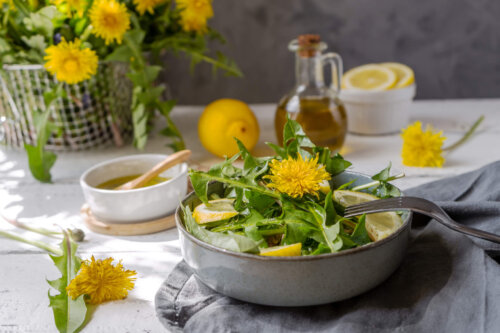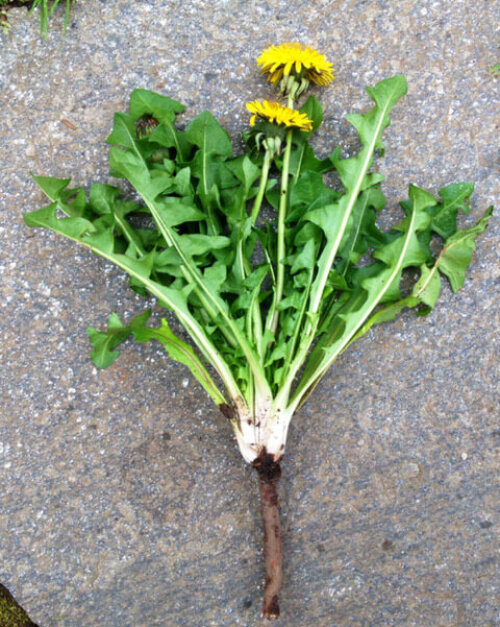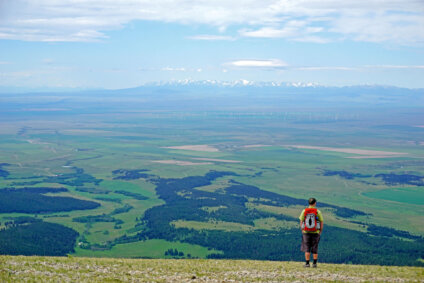How to Harvest and Eat the Common Dandelion
Reclaiming the familiar “weed” as food and family

This is the second post in Farmer Megan’s “Honorable Harvest” series. Stay tuned to learn about foraging, gathering, and eating dandelions, stinging nettles, lamb’s quarters, plantain, serviceberry, thimbleberry, and wild strawberry.
I love plants, know about their needs, and love to talk about their habits and history, so people love to tell me about new, exotic ‘wonder’ plants. And while their excitement is joyful, and I would never want to squash their exuberance, I always wish they could get that excited about the familiar plants that they see and often overlook every day. Sadly, familiarity breeds contempt, and the common dandelion isn’t just overlooked. It faces the ire of many lawn lovers and landowners. Its golden yellow bloom shines up at us from many herbicide bottles, and weeding tools are often designed to pull its taproot from the earth.
In college, I had the opportunity to attend a class in the Ecuadorian Amazon. I was ecstatic to meet the Amazon Rainforest, the trees, butterflies, birds, and plants. So many new and wonderful trees, right? The Amazon is the great forest in all the nature documentaries. And I wasn’t disappointed with them, but I wasn’t blown away either. Lying in my bug screen-covered bed in the forest hut, I wondered why I felt out of place.
Then I realized that there in the Amazon, I was the exotic. The trees didn’t know me, not like the Western Red Cedars, Coastal Redwoods, or Doug-Firs knew me. I had climbed their limbs since childhood, played tag with invisible woodland creatures under their canopies, and eaten lunch between midterms sitting against their trunks. Those ordinary Douglas firs, cedars, and redwoods were just as special, just as important, as the trees of the Amazon, and not only because all trees are important but because I considered them family. They were important to me because we knew each other. Not familiar but familial. They defined home for me then, and they still do today. I sometimes still laugh at having to travel thousands of miles away to a special place just to realize that the place I’m from was special too. The plants growing all around us, above us, and at our feet should mean the world to us.
Humans have a long relationship with dandelions as food and medicine.

Enter our common dandelion (Taraxacum officinale), which followed humans from Europe and has taken up residence in our landscaped and manicured lawns right alongside our homes. It has persisted and resisted many an eradication effort and is now considered naturalized. However, you still mainly find it where humans are most active: farms, fields, lawns, parks, and roadsides. Yes, it prefers disturbed soil and doesn’t mind being mowed, but what if it also grows near us not just because it finds these habitat conditions familiar but also finds us familial? Humans have a long relationship with dandelions as food and medicine. Could it not be so pervasive in our habitation areas because it remembers us and how we have relied upon it?
Because of its commonality, abundance, and pervasive nature, I strive to maintain a strong familial (not just familiar) relationship with this ubiquitous ‘weed’ and abide by the Honorable Harvest ethic when I forage for it. I start by introducing myself to the plant. I won’t give each and every patch my full life story, but I say ‘hello,’ and tell it my name and where I’m from, including the plant community that knows me. I also explain why I’ve come a-wandering, whether it’s food for me, medicine for my family, or if I’m looking to sell it at market. I don’t always say it out loud or in complete sentences, but I recommend that beginners do so until they learn how to speak to the plants without spoken words and hear them back in return.
In any harvest, you are coming to take part of a body, a life, a being, so it is important to let them know who you are and why you’ve come to take. It helps them decide whether they will allow you to take what you’ve asked for and for you to decide what you will give in return. (More on the concept of reciprocity in future posts.)
Dandelions are known for their bitterness; it’s part of their medicine. The observant forager will notice that the sweetest, most succulent greens don’t grow in the center of the sunny lawn but along the shadowy edges. Full sun tends to enhance the bitterness, whereas shade and a little dampness lessen their bitter tendencies and help the leaves grow tall. I leave the dandelions in the middle of the lawn for the deer to eat and the bees to pollinate, and I make friends with the ones that shine in the shadows.
Dandelions are known for their bitterness; it’s part of their medicine. The observant forager will notice that the sweetest, most succulent greens don’t grow in the center of the sunny lawn but along the shadowy edges.

Generally, the earliest, mildest greens can be added to salads while the later and slightly more bitter ones can be cooked in any recipe that calls for leafy greens (like spinach or chard) but ‘mild’ and ‘bitter’ are a matter of taste, literally, and each person has their opinion on what is too bitter to be eaten raw. The entire plant is edible, from the flowers to the roots. These are some of my favorite recipes that I enjoy each year from the dandelions that grow close to me.
*Note: Dandelions are often seen as a scourge destined for eradication, so use caution when gathering. Avoid roadsides, check with public land managers about their use of pesticides, and ask your neighbors to let you harvest before they spray. Even if you see them everywhere, your safest bet might just be those you tend to, which live right outside your door.
Recipes
Little Suns
Adapted from “Plants Have so Much to Give Us, All We Have To Do Is Ask,” by Mary Siisip Geniusz
When I feel lazy and hurried with springtime farm chores, I sometimes modify this recipe by using basic pancake mix and plopping entire flowers (green sepals and all) into the pancakes as they cook up. Maple syrup and butter help to dissipate any bitterness.
Ingredients
dandelion flowers
1 beaten egg
corn meal
a little salt
butter or margarine
Directions
- Remove all of the green stems from the base of the dandelion flowers as you pick them. Use your thumbnail to scoop out the material that grows at the top of the stem into the flowers so that no particle of the bitter juice remains.
- Wash the flowers and shake them dry.
- Holding one flower at a time between thumb and forefinger, dip it into a beaten egg and then push it down into cornmeal to which you have added a little salt.
- Place the coated flower upright on a plate while you coat the rest.
- Melt the butter or margarine in a frying pan over medium heat.
- Put flower heads face down on the pan and fry to a golden brown. Flip to the other side.
- Drain on a paper towel or brown paper bag. Serve warm.
Sauteed Crowns
The crowns are the white to pale green part just above the top of the root before the leaves turn bright green and flat. It is essentially blanched by being out of the sun and therefore mild and crunchy.
Ingredients
dandelion crowns, washed
salt and pepper
butter, oil, or bacon grease
Directions
- Heat a dollop of butter, oil, or bacon grease in a skillet over medium-high heat.
- Add the dandelion crowns and sauté until tender and slightly browned.
- Season with salt and pepper. Serve warm.
Dandelion Root ‘Coffee’
I’ve distrusted food look-a-likes ever since I was a kid, and adults tried to convince me that carob is an acceptable replacement for chocolate, but this is such a dark, bitter drink that calling it tea is too odd for me. It is caffeine-free. Harvest in early spring (before too much new growth) for the least bitter or in late fall (as it’s storing energy in its roots) for a more robust flavor.
Ingredients
fresh dandelion roots, washed and chopped
Directions
Preheat the oven to 350 degrees. Dry the roots, spread them on a pan, and roast them for up to 40 minutes. Check after 20 minutes and every 5 minutes after so that they brown but don’t burn.
- Let cool. Roots can be stored in an airtight container and refrigerated for a week.
- Brew “coffee” by placing about 2 tbsp of roasted dandelion and 2 cups water in a small saucepan. Add any other spices, like cinnamon, cardamom, or a scrap of vanilla pod, and simmer for 10 to 15 minutes.
- Strain and enjoy ‘black’ or with milk and sugar.
Stay Connected
"(Required)" indicates required fields


